 |
Ammonium Sulfate SDS Safety Data Sheet of Supplier Exporter Manufacturers' Representative |
Email: info@ammol.org |
Call Toll Free +1-855-552-6665 |
Ammonium Sulfate
CAS Number: 7783-20-2
Molecular Formula: (NH4)2SO4
Molecular Weight: 132.14
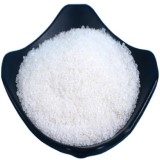
Ammonium Sulfate
Ammonium Sulfate SDS Safety Data Sheet
MSDS Sheet, Material Safety Data Sheet 04-Feb-24
Section1. Product Information
Product Name & Other Names: Ammonium Sulphate or Ammonium Sulfate or Diammonium Sulfate.
CAS Number: 7783-20-2
EINECS EC Number: 231-984-1
Relevant uses and uses advised against (if any): Industrial use only.
Supplier: American Molecules, 9910 Bent Oak Dr, Houston, TX 77040, USA.
Call Toll Free: 1-855-55-AMMOL 1-855-552-6665.
In case of emergency contact: Will be given with the supply.
Section 2. Hazards Identification
GHS, Globally Harmonized System Classification in accordance with 29 CFR 1910
Classification according to Regulation (EC) No 1272/2008
Not a hazardous substance or mixture according to Regulation (EC) No. 1272/2008.
This substance is not classified as dangerous according to Directive 67/548/EEC.
Labeling according to Regulation (EC) No 1272/2008
GHS Label Elements None |
Signal Words: None
Hazard not otherwise classified:
H320 May causes mild eye irritation.
H402 May be a little harmful to aquatic life.
Precautionary statements:
P262 Do not get in eyes, on skin, or on clothing.
P264 Wash skin thoroughly after handling.
P270 Do not eat, drink or smoke when using this product.
P305+P351+P338 IF IN EYES: Rinse cautiously with water for several minutes. Remove contact lenses, if present and easy to do. Continue rinsing.
P337+P313 If eye irritation persists: Get medical advice/ attention.
Section 3. Composition/Information on Ingredients
Product Name & Other Names: Ammonium Sulphate or Ammonium Sulfate or Diammonium Sulfate.
CAS Number: 7783-20-2
EINECS EC Number: 231-984-1
Section 4. First Aid Measures
Always seek medical attention after first aid measures are provided.
Skin: Wash promptly with soap and water and flush with water until chemical is removed. Remove any contaminated clothing and wash before reuse. Get medical attention for irritation.
Eyes: Flush promptly with plenty of water for at least 15 minutes. Get medical attention.
Inhalation: Remove to fresh air. If breathing is difficult, give oxygen if a qualified operator is available. Get medical attention for irritation or discomfort.
Ingestion: If conscious drink 2 to 4 glasses of water and induce vomiting by touching back of throat with finger.
Section 5. First Aid Measures
Flash Point: Not applicable
Auto-ignition Temperature: Not applicable
Extinguishing Media: Any standard agent may be used. If involved in a fire, flood with water.
Unusual Fire and Explosion Hazards: Ammonium Sulfate decomposes at elevated temperatures to produce toxic fumes of ammonia and sulfur oxides. If mixed with strong oxidizers such as ammonium nitrate or potassium salts (nitrite, nitrate, or chlorate), a vigorous reaction may occur. Special Fire Fighting Precaution: Since toxic gases may be released violently at high temperatures, firefighters should wear full protective clothing and NIOSH approved, self contained breathing apparatus. Use water to keep fire exposed containers cool.
Section 6. Accidental Release Measures
Personal precautions, protective equipment, and emergency procedures: Ventilate area of leak or spill. Avoid breathing dust/fumes/gas/mist/vapors/spray. Use individual protective equipment (waterproof boots, suitable protective clothing, safety glasses, etc.). Restrict unprotected personnel from the area. Prevent any contact with hot surfaces. Do not approach facing the wind.
Environmental precautions: Do not let the product enter drains, soil, or water sources.
Methods and materials used for containment Cleanup procedures and Storage: Contain spilled material. Cover with an inert, non-combustible absorbent material, (e.g. sand, earth, diatomaceous earth, vermiculite). Vacuum or sweep-up and remove to an approved disposal container.
Section 7. Handling and Storage
Precautions for safe handling: Apply according to good manufacturing and industrial hygiene practices. Ensure proper ventilation. Wash thoroughly after handling. Do not drink, eat, or smoke while handling. Avoid contact with skin, eyes, and clothing. Minimize dust generation. Avoid breathing dust/fumes/gas/mist/vapors/spray. Avoid contact with eyes, skin, and clothing. Keep container tightly closed. Avoid ingestion and inhalation. Use individual protective equipment (waterproof boots, suitable protective clothing, safety glasses, etc.).
Conditions for safe storage, including any incompatibilities: Store in cool, dry, and ventilated area away from heat sources and protected from sunlight in tightly closed original container. Keep air contact to a minimum. Store protected from heat, sparks and ignition sources and incompatible materials. Avoid contact with skin and eyes. Avoid inhalation of dust/mist/vapor. Do not store with incompatible materials like strong oxidizing agents, strong acids & bases. Avoid Sources of ignition. Direct sunlight.
Section 8. Exposure Controls/Personal Protection
Exposure Limits: No occupational have been established for this product. Keep it at <10mg/m3
Engineering Controls: Provide local exhaust, if dusty conditions prevail.
Personal Protective Equipment
Skin Protection: To minimize skin contact, wear long sleeved shirt, trousers and gloves for routine product handling and use.
Eye Protection: Under dusty or misty conditions, wear chemical safety goggles. Do not wear contact lenses.
Respiratory Protection: Where dusty or misty conditions require it, use a NIOSH approved dust or mist respirator for needed protection.
Section 9. Physical and Chemical Properties
Appearance: Colorless to off-white crystals or granules.
Odor: Odorless
Odor threshold: Not applicable.
pH: 5-6 at 5% water solution.
Relative density: around 1.77
Boiling Point: > 280 °C (536 °F)
Melting Point: - 235 °C (-391 °F)
Flash point: No data found.
Auto-ignition temperature: No data found.
Decomposition temperature: No data found.
Upper/lower flammability or explosive limits: No data found.
Vapor pressure: No data found.
Vapor density: No data found.
Evaporation rate: No data found.
Flammability (solid, gas): No data found.
Partition coefficient: n-octanol/water: No data found.
Solubility in Water: (Weight %) 38% solution @ 20C
Viscosity: No data found.
Section 10. Stability and Reactivity
Normally Stable (Conditions to Avoid): It is stable under normal conditions.
Incompatibles: Oxidizers, e.g. potassium salts -nitrate, nitrite, chlorate, also chlorine or hypochlorite. Strong acids & bases. Avoid contact with zinc-clad and copper.
Hazardous Decomposition Products: Ammonia and sulfur trioxide and sulfur dioxide gases.
Hazardous Polymerization: Will not occur.
Section 11. Toxicological Information
Immediate (Acute) Effects:
Acute Oral LD50 Rat: 2840 mg/kg
Acute Inhalation LC50 Rat: > 1000 mg/m³ 8 Hours
Acute Dermal: LD50 dermal rat: 2840 mg/kg (Rat)
Carcinogenicity: No component of this product present at levels greater than or equal to 0.1% is identified as probable, possible or confirmed human carcinogen by IARC.
Mutagenic Effects: No data found.
Teratogenic Effects: No data found.
Developmental Toxicity: No data found.
Reproductive Effects: No data found.
Section 12. Ecological Information
LC50 Fish-1: 5.2 - 8.2 mg/l (Exposure time: 96 h - Species: Oncorhynchus mykiss [static])
LC 50 Fish-2: 32.2 - 41.9 mg/l (Exposure time: 96 h - Species: Oncorhynchus mykiss [flow-through])
EC50 Daphnia-1: 423 mg/l (Exposure time: 24 h - Species: Daphnia magna)
EC50 Daphnia-2 14 mg/l (Exposure time: 48 h - Species: Daphnia magna)
EC50 Water flea (Ceriodaphnia dubia): 52 - 67 mg/l 48 hours
LC50 Pink salmon (Oncorhynchus gorbuscha): 0.068 mg/l 96 hours
LC50 Rainbow trout, donaldson trout (Oncorhynhus mykiss): 35.2 - 43.8 mg/l 96 Hours
Bioaccumulation: Not expected to bioaccumulate.
Persistence and Degradability: Not likely to persist.
Mobility: Likely to be mobile due to water solubility.
Section 13. Disposal Considerations
Other Disposal Considerations: The product is a fertilizer; therefore, waste ammonium sulfate might be used as a fertilizer. If discarded to waterways, it may promote eutrophication. Disposal must be in accordance with applicable disposal regulations.
Section 14. Transport Information
Land Transport DOT USA, TDG Canada & ADR/RID Europe: Not Regulated.
Sea Transport IMDG/IMO: Not dangerous goods.
Air Transport IATA/ICAO: Not dangerous goods.
Section 15. Regulatory Information
USA:
SARA 311/312 Hazards: See section 2.
California Prop. 65 Components: This product does not contain any chemicals known to State of California to cause cancer, birth defects, or any other reproductive harm.
Section 16. Other Information
DISCLAIMER: The information and recommendations set forth herein are presented in good faith and believed correct as of the date hereof. It is compiled from various sources, and it is not necessarily all inclusive nor fully adequate in every circumstance. In addition, these suggestions should not be confused with nor followed in violation of applicable laws, regulations, rules, or insurance requirements applicable. This SDS MSDS sheet is intended only as a guide to the appropriate precautionary handling of the material by a professionally trained person using this product. Individuals receiving the information must exercise their independent judgment in determining its appropriateness for a particular purpose. This shall not constitute a guarantee for any specific product features and shall not establish a legally valid contractual relationship. In no case shall our company be liable to loss or damages by the product user.
Please visit Main Page of Ammonium Sulfate Suppliers.
American Molecules, also known as ammol.org is a distributor, supplier and manufacturers' representative of all types of Pharmaceuticals, Functional Ingredients, Excipients and Specialty Chemicals in Texas USA. Our principals manufacture supply and export USP NF BP, Ph Eur, etc grades of chemicals pure and reagent grade, mineral fortifiers, FCC food grade. Tailor made particle size and customized specifications are offered. The principal's facility is having one or more of the certifications like FDA approval and GLP, cGMP, ISO9001, ISO14001, ISO/IEC 17025, ISO22000, FSSC 22000, ISO45001, FSSAI, Kosher, HALAL, COPP, WHO-GMP certified and Written Confirmation (WC) for export to Europe is available. The manufacturers suppliers and exporters observe WHO Good Manufacturing Practices and Good Laboratory Practices.
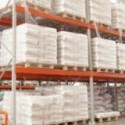
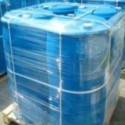
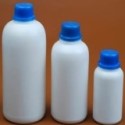
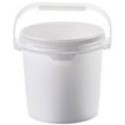

Suppliers and Manufacturers' Representative:

9910 Bent Oak Dr
Houston, TX 77040, USA
Call Toll Free: 1-855-55-AMMOL 1-855-552-6665
Email: info@ammol.org